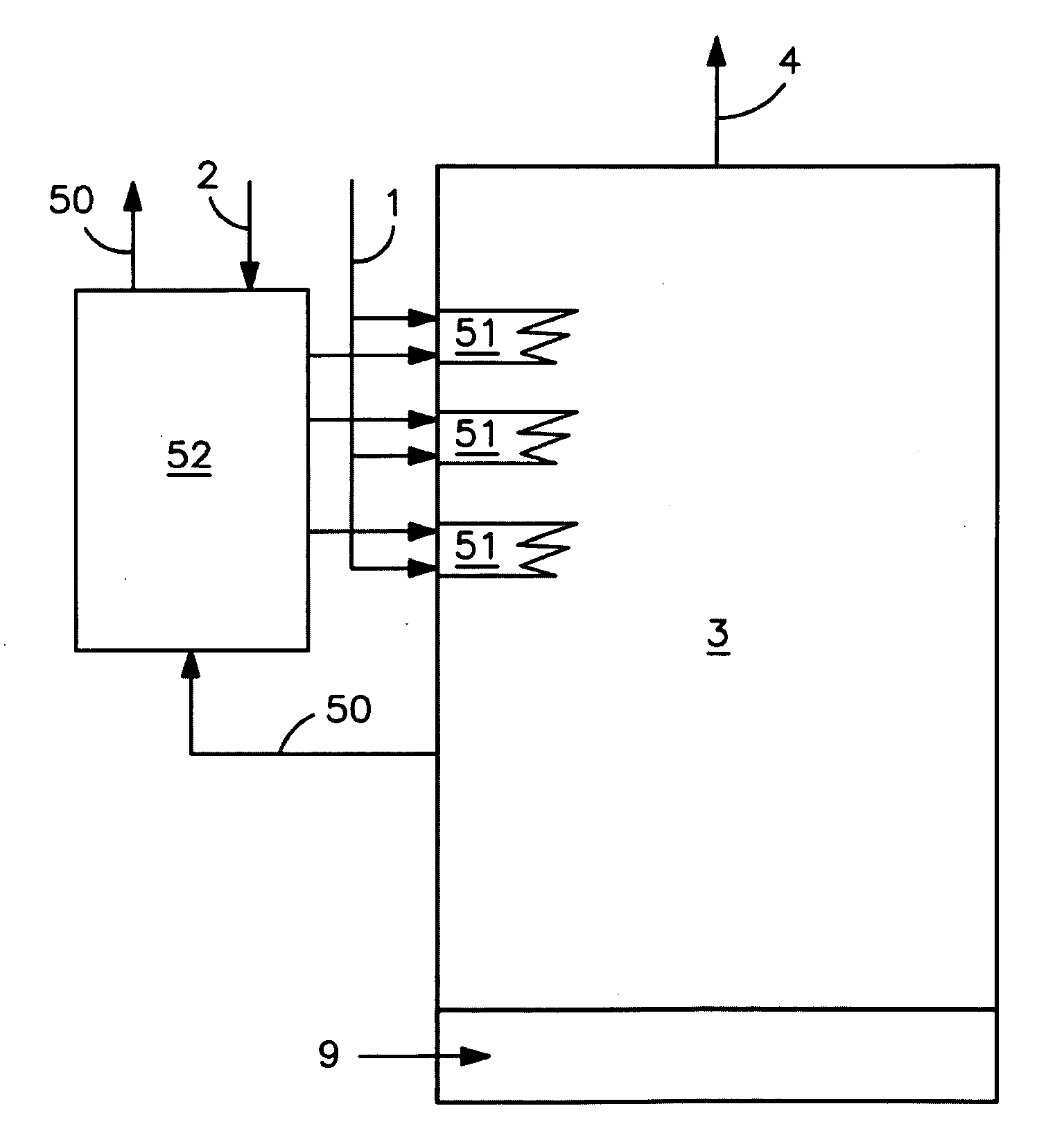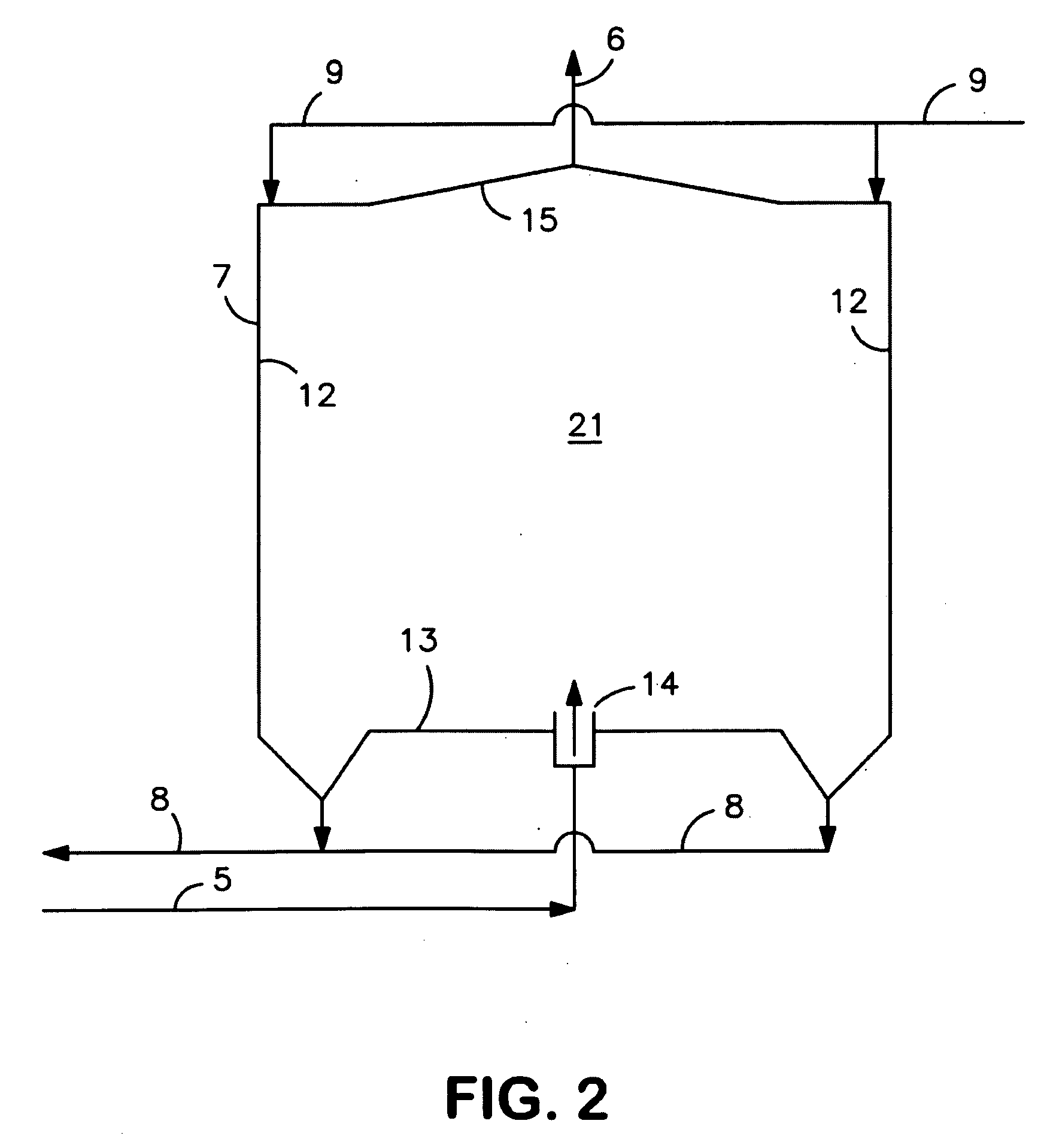Glass furnace flue gas to heat glassmaking material and oxidant
a technology of glass furnace and glassmaking material, which is applied in the field of glass production, can solve the problems of reducing throughput and even plugging of heat exchanger passages, wasting energy in glassmaking operations, and reducing the efficiency of glassmaking operations
- Summary
- Abstract
- Description
- Claims
- Application Information
AI Technical Summary
Benefits of technology
Problems solved by technology
Method used
Image
Examples
example
[0069]Table 1 shows an illustrative comparison of the energy balances of (Case 1) 450 short tpd regenerative container glass melting furnace with five ports to a regenerative-type indirect heat exchanger, (Case 2) the same furnace with a conventional batch cullet preheater to preheat batch / cullet to 572° F., and (Case 3) a modified 450 short tpd regenerative container glass melting with the present invention to preheat batch / cullet to 932° F. 50-50 mixture of batch and cullet is assumed in all cases. In Case 3 a portion of the flue gas from the air fired glass melting furnace is extracted and directly introduced into a radiative unit 7 to preheat the glassmaking material, preferably to 600 to 1200 F, and more preferably to 800-1100° F. The remaining flue gas passes through the existing indirect heat exchanger(s) e.g. regenerators or recuperators. The heat recovery efficiency of the regenerators or recuperators is improved as the ratio of the hot flue gas flow rate to the combustion ...
PUM
| Property | Measurement | Unit |
|---|---|---|
| temperature | aaaaa | aaaaa |
| temperature | aaaaa | aaaaa |
| temperature | aaaaa | aaaaa |
Abstract
Description
Claims
Application Information
 Login to View More
Login to View More - R&D
- Intellectual Property
- Life Sciences
- Materials
- Tech Scout
- Unparalleled Data Quality
- Higher Quality Content
- 60% Fewer Hallucinations
Browse by: Latest US Patents, China's latest patents, Technical Efficacy Thesaurus, Application Domain, Technology Topic, Popular Technical Reports.
© 2025 PatSnap. All rights reserved.Legal|Privacy policy|Modern Slavery Act Transparency Statement|Sitemap|About US| Contact US: help@patsnap.com



